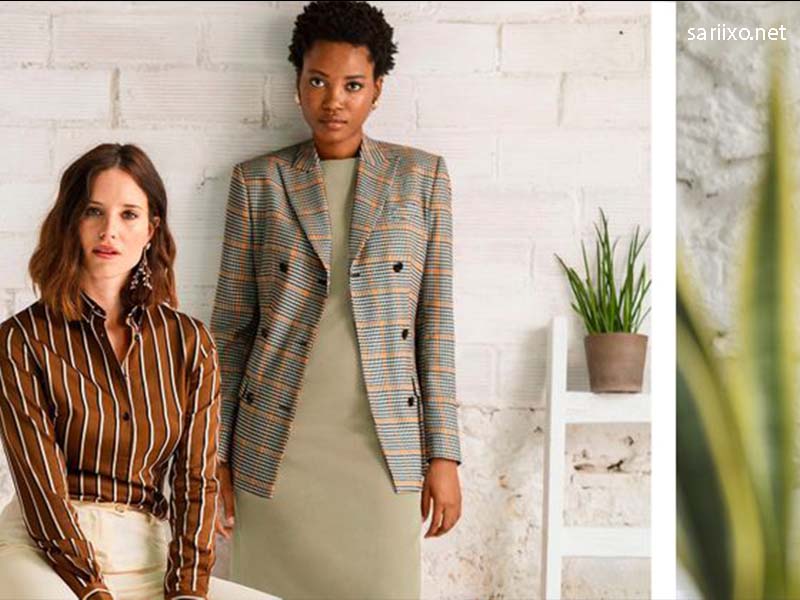In today’s dynamic workplace, the dress code is often less formal than in previous decades. One of the most popular styles that have emerged is business casual. This attire strikes a balance between professional and relaxed, allowing women to express their individuality while maintaining a polished appearance. But what exactly does “business casual” mean for women? This guide will delve into the essentials of business casual attire, providing clarity and tips to help women navigate this versatile dress code confidently.
Understanding Business Casual
Business casual is often a broad term that can vary by company culture, industry, and even geographical location. At its core, business casual aims to create a professional look without the formality of traditional business attire, such as suits or dresses. It allows for creativity and personal style while ensuring that employees still present a neat, put-together appearance.
Key Characteristics of Business Casual
Professionalism
Clothing should always look professional and appropriate for the workplace.
Comfort
The attire should be comfortable enough to work in, reflecting a relaxed yet respectable style.
Versatility
Business casual outfits should easily transition from day to evening, making them suitable for meetings or after-work events.
Essential Pieces for Women’s Business Casual Attire
Blouses and Shirts
Fabric and Fit
Opt for blouses made of breathable fabrics such as cotton, silk, or chiffon. Look for tailored fits that flatter your shape without being overly tight.
Styles
Classic button-down shirts, smart tunics, and stylish blouses with subtle patterns or colors are all excellent choices. Avoid overly casual T-shirts or graphic tees.
Trousers and Slacks
Tailored Options
Choose tailored trousers or slacks in neutral colors like black, navy, or gray. These can be paired easily with various tops.
Fabric Choices
Opt for materials like wool, cotton blends, or dressy denim. Avoid leggings or overly casual pants.
Skirts
Length and Style
A-line, pencil, or midi skirts are appropriate for business casual. Ensure the length is professional, typically knee-length or just above.
Patterns and Colors
Solid colors or subtle patterns work best. Bright colors or flashy prints may be too informal for a business setting.
Dresses
Professional Cuts
Choose dresses that are tailored and have a modest neckline and hemline. Wrap dresses and sheath dresses are often ideal options.
Layering
Pair dresses with blazers or cardigans for a more polished look.
Blazers and Cardigans
Structured Layers
A fitted blazer can instantly elevate any outfit, making it look more professional. Cardigans can also provide a softer, more relaxed look while maintaining a level of professionalism.
Colors
Stick to neutral shades or subtle patterns to keep the overall look cohesive.
Footwear
Shoes
Opt for closed-toe shoes such as loafers, ankle boots, or low heels. Sneakers may be acceptable in some workplaces, but they should be clean and in good condition.
Comfort is Key
Ensure that your footwear is comfortable for long hours of wear while still looking professional.
Accessories to Enhance Your Business Casual Look
Jewelry
Simple, understated jewelry can add a touch of elegance to your outfit. Consider stud earrings, a delicate necklace, or a classic watch.
Bags
A structured tote or handbag is ideal for carrying your essentials. Avoid overly casual bags, such as backpacks or large, slouchy purses.
Scarves and Belts
Adding a scarf or a belt can be a great way to introduce color or pattern into your outfit without compromising professionalism.
Tips for Styling Business Casual Outfits
Fit Matters
Always ensure that your clothing fits well. Tailored pieces will look more polished than loose, oversized garments.
Mix and Match
Don’t hesitate to mix different textures and colors within the business casual realm. For example, pair a silk blouse with tailored trousers for a chic look.
Dress for Your Industry
Consider the norms of your specific industry. For example, a creative field may allow for more vibrant colors and patterns, while a corporate environment may lean towards more subdued tones.
Seasonal Adjustments
Adapt your wardrobe according to the seasons. In colder months, incorporate tailored blazers and heavier fabrics, while in summer, opt for lighter fabrics and breathable styles.
Common Mistakes to Avoid
Overdressing or Underdressing
Be mindful of the expectations in your workplace. Striking the right balance is crucial, as being too formal or too casual can be perceived negatively.
Neglecting Grooming
Regardless of your outfit, personal grooming matters. Ensure your hair, nails, and makeup (if applicable) are neat and professional.
Ignoring Comfort
While style is important, comfort is key for productivity. Choose pieces that allow you to move freely and confidently throughout the day.
Conclusion
Understanding what constitutes business casual for women is essential in today’s diverse workplace environment. With the right combination of tailored pieces, comfortable footwear, and stylish accessories, women can effortlessly navigate the balance between professionalism and personal style. By following these guidelines, you’ll be well-equipped to create business casual outfits that not only meet dress code requirements but also reflect your unique personality and confidence.
Whether attending a meeting, heading to the office, or participating in networking events, having a solid grasp of business casual attire will empower you to make a positive impression while feeling comfortable and authentic. Embrace the versatility of business casual and let your wardrobe work for you!



